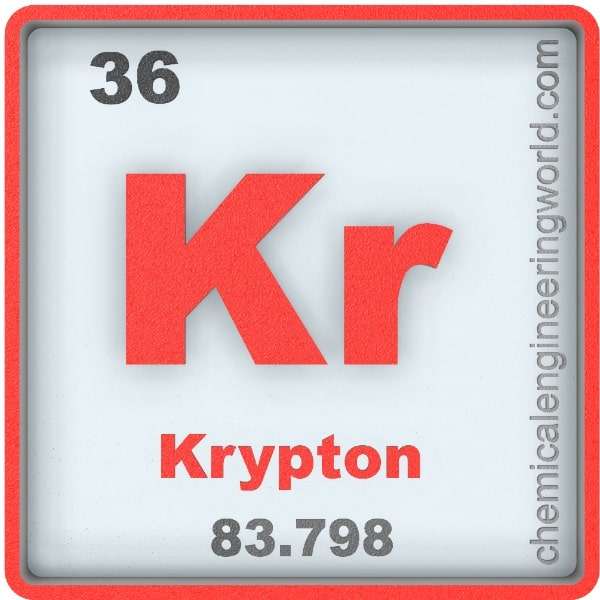Krypton Element Properties and Information

Krypton Element Properties and Information
Krypton is thirty-sixth element on the periodic table. Elements are arranged in the periodic table on the basis of the atomic number. Atomic number is the number of protons in the nucleus of the atom. Krypton has an atomic number of 36. It is located in the Group 18 and Period 4 of the periodic table of elements. It is denoted by Kr. The name is derived from the Greek word ‘Kryptos’ which means Hidden.
William Ramsey and Morris William Travers contemplated after the discovery of argon, that, argon may be one of the elements in a group of elements possessing similar properties and qualities. They discovered a new element being condensed out and separate from the argon obtained from air in 1989. This new element is Krypton.
Krypton is very rare on earth. It is one of the rarest gases present on earth and makes up to 1 ppm by volume of the entire atmosphere.
Physical Properties
- Krypton is colourless, odourless, and an extremely inert gas.
- The atomic mass of krypton is 83.80
- The melting point of krypton is -157°C
- The boiling point of krypton is -153°C
- The density of krypton is 3.73 in S.I. units at 20°C
- Krypton has five naturally occurring stable isotopes and one radioactive isotope, krypton-78, has such a long half-life that it can be considered stable.
Chemical Properties
Krypton is extremely non-reactive. It does not react with any element except fluorine.
Methods of Production
Distillation of Air: Krypton is extracted by cooling air to such a low temperature that it gets condensed and separated. Initially it will appear together with the argon gas. Further cooling separates it.
Relevance in Chemical and Related Industries
Tracer: Krypton-85 is used for leak testing and detections.
Relevance in Other Industries
- Photography: The ionized discharge of krypton is white in colour. It makes it useful as a light source in photography.
- Filling gas: Krypton is sometime mixed with argon in fluorescent lamp. Krypton is also sometimes filled in neon tubes for artistic effects.
- Laser: Krypton fluoride laser is used in nuclear fusion energy research in confinement experiments.
- Particle Physics: Liquid krypton is used to construct calorimeters in the field of particle physics.
Imaging: Krypton-83 is used in magnetic resonance imaging (MRI) for imaging the airways.
Health Effects on Exposure
Inhalation: Depending on the amount inhaled it can cause dizziness, vomiting, nausea, loss of consciousness, and necrosis.
Effects on Surroundings
No long term harmful effects have been observed
References:
https://en.wikipedia.org/wiki/Krypton
































